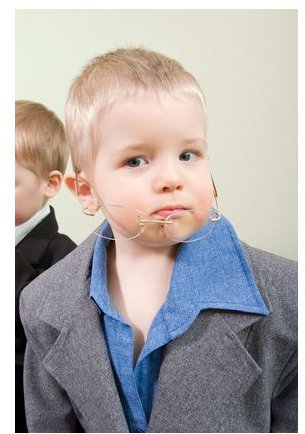PDD Treatments: An Insight
Introduction
If a child appears to lag behind his or her peers in attaining developmental milestones, particularly in the areas of language skills and social interaction, he or she may have one of the five disorders included within the group of PDDs. Since developmental disorders are pervasive, meaning invasive and persistent, early intervention is crucial for a child’s health and wellbeing. If a child receives a PDD diagnosis, it’s important for parents to understand that PDD treatments cannot provide cures. The benefits of PDD treatments primarily consist of alleviating and controlling symptoms, as well as promoting normal functionality.
PDD Treatments and Approaches
Since the primary symptoms or characteristics of the five PDD disorders are similar, the PDD treatments also share some similarities. But there are also distinct differences that require specialized approaches and treatments. In all cases, each child requires customized treatment appropriate for his or her specific needs.
PDD treatments strive to alleviate or control symptoms, as well as improve functionality. It is important to note that many alternative treatments are still in the experimental stage, with no significant evidence to either support or refute them.
Childbrain.com, a site devoted to pediatric neurological issues, states that PDD treatments include approaches from a variety of disciplines, including behavioral, developmental, academic, and medications. [2] Since autism is the PDD that affects the greatest number of children and has experienced the most research, the majority of resources discuss treatments for autism; however, these approaches and treatments can easily apply to the other PDDs, due to the similarity of symptoms.
Treatments for Similar PDDs
Addressing the similar symptoms or characteristics shared by all five PDDs means tackling the issues of communication, social interaction, and compulsive behaviors or mannerisms. The main goals and benefits of various PDD treatments are to alleviate specific symptoms, modify behaviors, and establish maximum functionality. Childbrain.com describes the following approaches and treatments [3]:
- Behavior modification: often incorporates principles of applied behavior analysis (ABA); the purpose is to change or correct abnormal or unacceptable behaviors.
- Speech, physical, or occupational therapy: speech therapy addresses communication disorders and helps to initiate or facilitate speech and language skills; physical therapy helps children who have difficulties with muscle tone and gross motor coordination, or other physical impairments; occupational therapy focuses on improving fine or sensory motor skills.
PDD Treatments and Approaches (continued)
- Medications: these don’t heal PDDs, but they provide relief from symptoms, such as anxiety, depression, hyperactivity, convulsions, and other physical conditions or potentially dangerous behaviors.
- Special education: strategically designed IEPs (Individualized Education Plans/Programs) address special needs of children with PDDs to improve their chances of success in school; may include using assistive technology or other accommodations.
Specialized PDD Approaches and Treatments
Where key differences exist in a specific category of PDD, the PDD approach and treatment must accommodate those differences. Following are examples of specific needs and potential treatments covered in greater detail at Autism-PDD.net [4]:
- Food intolerance/allergies and special nutritional needs: vitamin/mineral therapy to replace or enhance nutrients, often resulting in improved cognitive functioning and better behavior; elimination diets to isolate typical foods known to cause reactions; anti-yeast therapy to repair and improve functioning of central nervous and immune systems.
- Sensory sensitivities: sensory integration (may include music therapy and auditory training) to reduce anxiety and increase tolerance to various stimuli and changes in the environment.
- Speech and language skills: these help to initiate and facilitate speech and language skills and include augmentative and alternative communication (AAC) devices or systems, which may include PECS (Picture Exchange Communication System), VOCAs (Voice Output Communication Aids), and type-and-talk technology.
References
Please check out the relevant references for this article, as well as helpful resources to expand your knowledge on this topic.
[1] National Institutes of Health - National Institute of Neurological Disorders. Pervasive Developmental Disorders. Retrieved from https://www.ninds.nih.gov/disorders/pdd/pdd.htm
[2]Childbrain.com. PDD – Best Treatments. Retrieved from https://www.childbrain.com/pddq10.shtml
Resources
Autism-Help.org. Autism, Asperger’s syndrome, PDD-NOS, and related disorders. Retrieved from https://www.autism-help.org/index.htm
UMICH-Your Child Development & Behavior Resources. Autism, Autistic Spectrum Disorders (ASD) and Pervasive Developmental Disorders (PDD). Retrieved from https://www.med.umich.edu/yourchild/topics/autism.htm
Image Permission
Little boy with dangling glasses image permission: by NiDerLander from Fotolia.com
